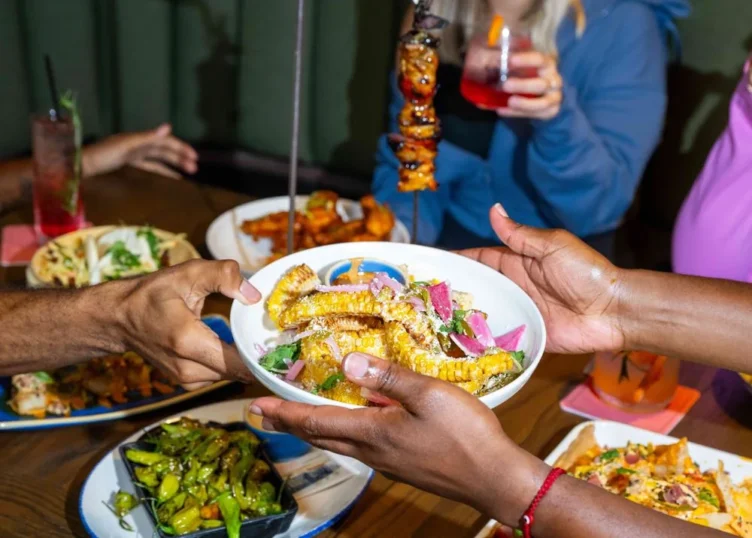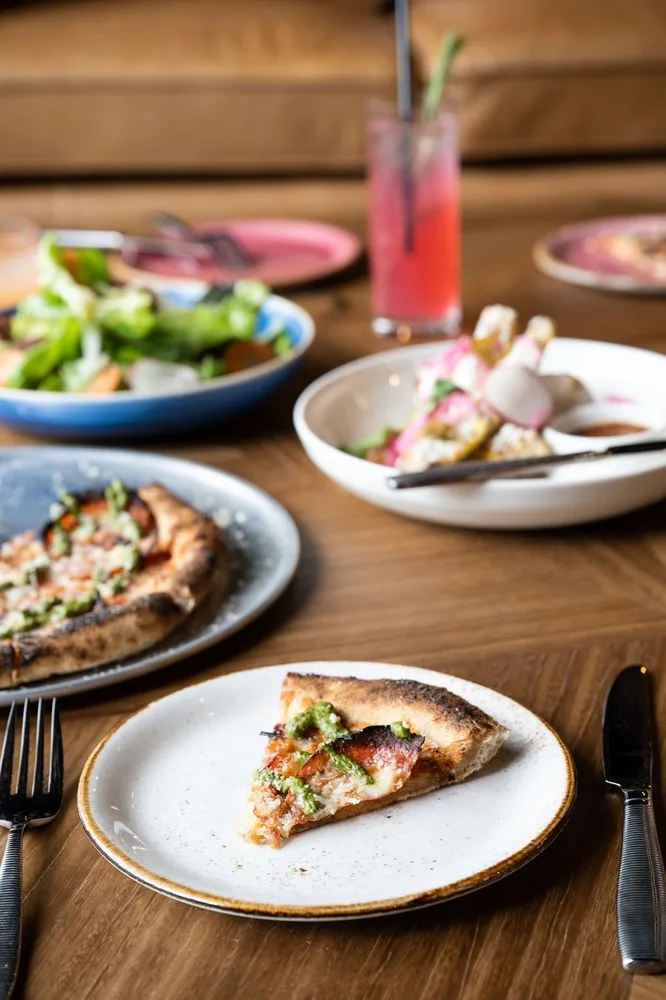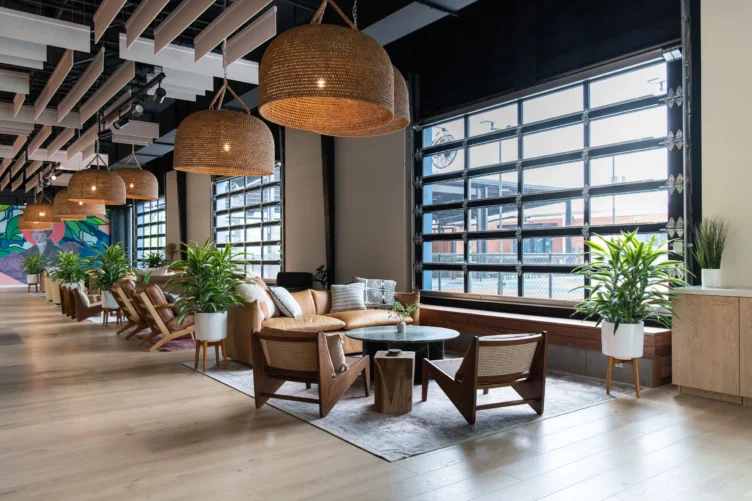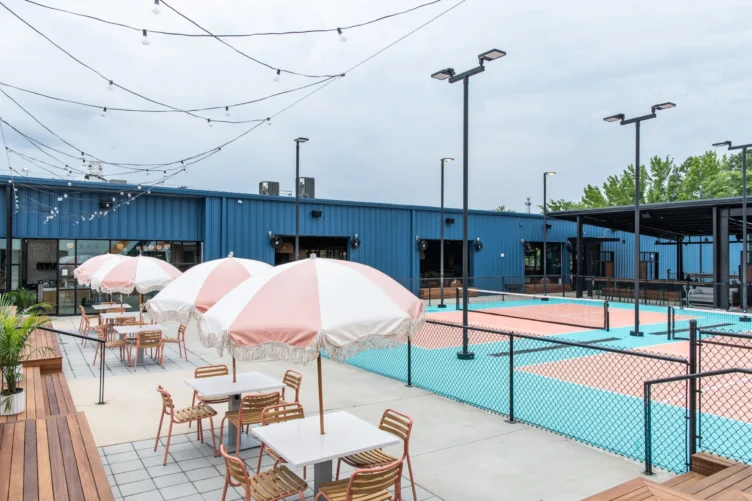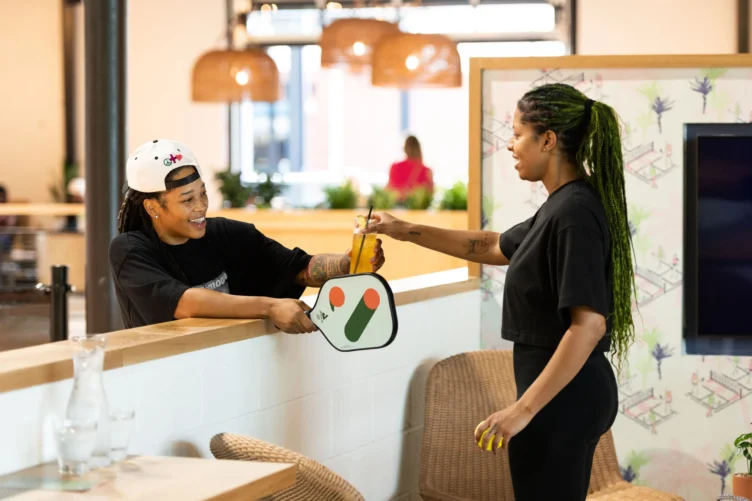6 winning strategies from the founders of a $15 million pickleball start-up
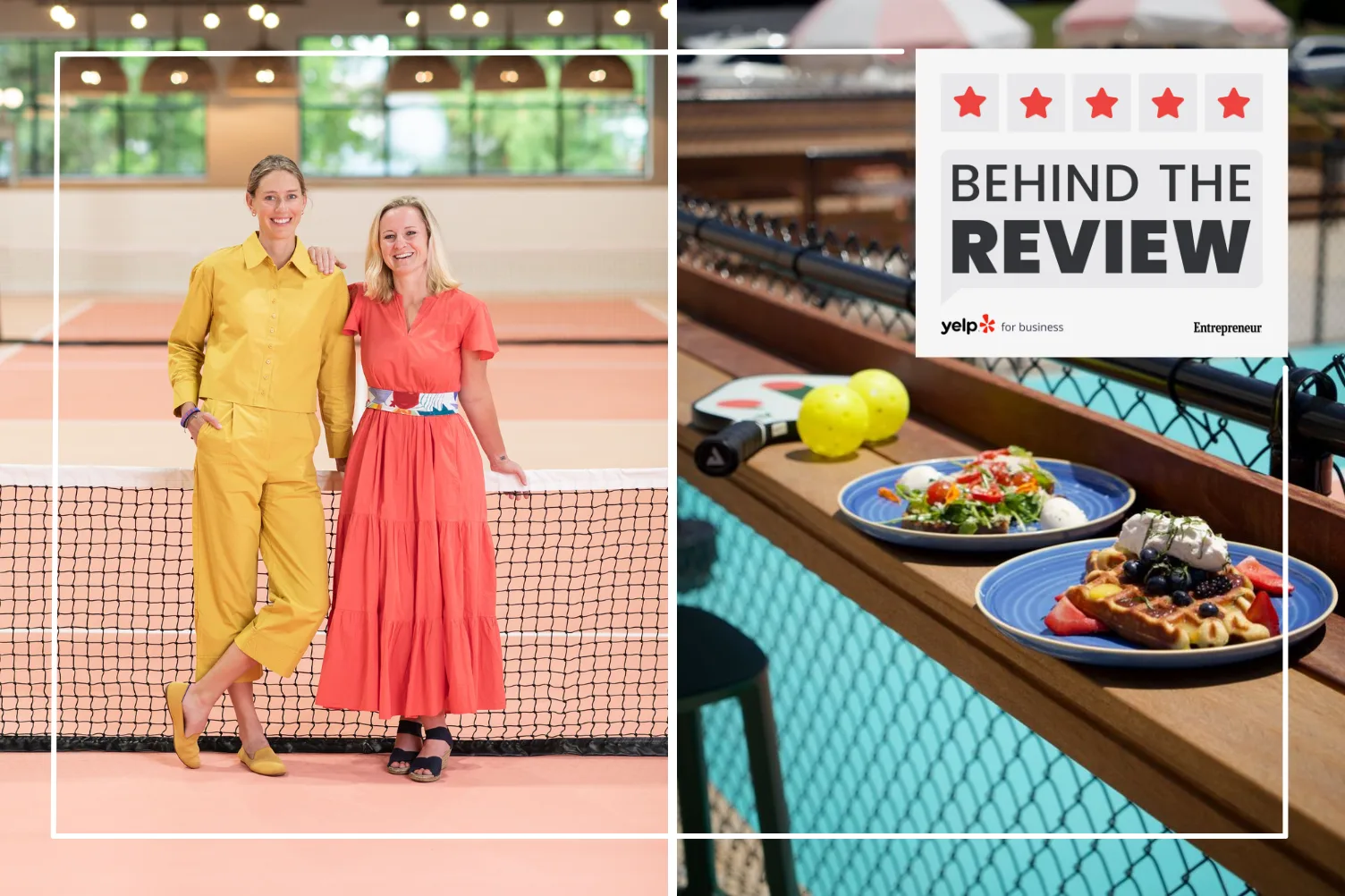
Entrepreneurs Meg Charity and Barrett Worthington didn’t come to play—unless you’re talking about pickleball. Starting seven years ago, the life and business partners dreamed up an idea to help nurture relationships and the game’s growing popularity at a reimagined county club.
After raising $15 million from private investors, Meg and Barrett launched Rally in Charlotte, North Carolina, to near-immediate success: Within the first six months, more than 40,000 people flocked to the one-of-a-kind experience featuring pickleball courts, craft cocktails, and elevated cuisine—a combination so winning it retains 75% of guests.
But as serious as Meg and Barrett are about Rally’s success, they are still motivated by a spirit of play and sharing their love of the game. “Sports in general are icebreakers and help you make friendships,” Barrett said. “We created Rally because we wanted a place where friendships could naturally blossom for ourselves as much as anybody.”
Below, Rally co-founders Meg and Barrett share six lessons learned throughout the start-up process, from pitching investors to designing the space and making constant improvements to the customer experience.
1. Use the element of surprise to your advantage
Barrett: “[We were very] intentional in creating a space that functioned more like a social club or a country club turned on its head. We want it to be as known for the food and the beverage and the vibe as the pickleball itself. So I think it’s great when someone comes for one thing and then observes or sees the other thing.
“People will say, ‘Gosh, like who expected a pickleball place to have food this good?’ And we’re like, ‘Well, we’re not just a pickleball place.’ We do have really good food. It surprises people, but then they’re back the next day, not in their pickleball clothes and they’re there for the cocktail or the coffee. That’s the goal.”
2. When you’re pitching investors, give them the full experience
Barrett: “The number one question we would get when pitching investors] was: Are you a restaurant, or are you a sports venue? And [we would say]: “We don’t like that question, ask another one.’”
Meg: “It took a long time to find that person who was like, ‘Okay. I see what you’re doing here.’ The first investor we got was somebody who we took out on a pickleball court. So we played pickleball with him, and he brought his son—and his son loved it. It was an experience where he felt he could connect with his son, maybe in a way that somehow he couldn’t [before]. That was our first bite. It just felt like they understood what pickleball can do for the community.
3. Design a space you would want to spend time in
Barrett: “We designed a space that we would want to spend time in. I think that when it’s authentic and it comes from that place, [a business] typically has a longer lifespan… We’ve always built our social groups around sports, and we wanted to create that experience for the twenties to mid-thirties demographic that doesn’t always have easy outlets to make friends.
“We were really intentional about designing the space to not feel like a sports venue—so lots of natural light, lots of plants, lots of warm wood tones throughout. We’ve got hardwood floors, all the drink rails—everything around has a very kind of warm feeling. On the outside, our courts are this bright blue turquoise, watermelon combination. Again, with this goal of creating contrast and surprise, it’s always a talking point.”
4. Don’t assume you know what your customers want—ask them
Meg: “We track reviews on a weekly basis, we track spend, we track events, we track guest behaviors. I mean, we track everything that can be tracked, knowing that some things you have to address in a longer pattern and other things you can make quick pivots to address, things like pricing model.”
Barrett: “A great example is actually memberships. We have not opened memberships yet. We’ve always known from day one, there will be memberships, but what we did want to do is let the first year pass, understand the guests’ pain points and what would be of greatest value to them. How do we use memberships to better serve them, rather than just assume we know what they want? We’re taking notes.”
5. Rally your team around the mission (and the pickleball courts)
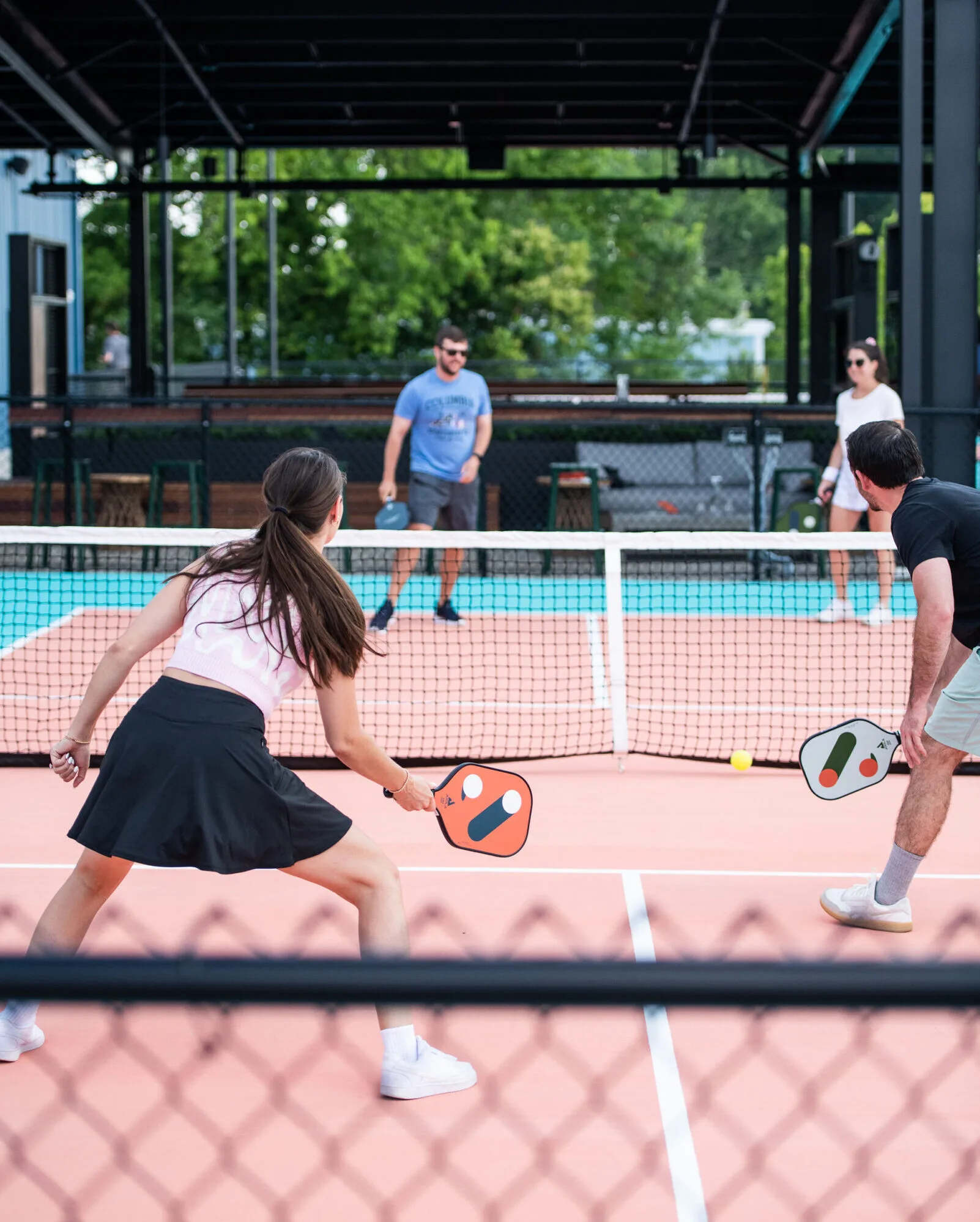
Barrett: “Not everyone wants to work in a start-up environment. It attracts a certain type of person who wants to be part of building something from scratch… We’re all here to do something bigger and something more meaningful. We want to be a catalyst for connection. We talk about that a lot and what that means to everyone. I think in this day and age, you only stick around in a job if you believe in the mission.
Meg: “We care a lot about internal culture [and are always getting] those feedback loops going: How can we improve? How can we do better? I am very involved. I’m there every single day. I built our pickleball program, and so I get to spend a lot of time with our internal team.”
Meg’s tip: Bond with your team over a game.
The cool thing about pickleball is when your staff plays it, they’re also bought in. Pickleball just becomes the glue and it’s the shared goal and mission of the team.
6. Customers care enough to review, so you should care enough to respond
Barrett: “When we first opened our doors, I remember every review. We were pouring over the details—and we still do—but definitely, the two of us personally reached out to almost every single person for a long time. Even if it was a 4-star review, we’d be like, ‘Well what could we have done better?’
“We so genuinely appreciate [feedback]. Our regulars know this about us. When we ask for feedback, it’s not just to check a box. We desperately want Rally to be the absolute best it possibly can be. Everyone who takes the time out of their day to review cares—in one way or another—and if you care, we care, and we want to act.”
These lessons come from an episode of Behind the Review, Yelp & Entrepreneur Media’s weekly podcast. Listen below to hear from Barrett and Meg, or visit the show homepage to learn about the show and find more episodes.
